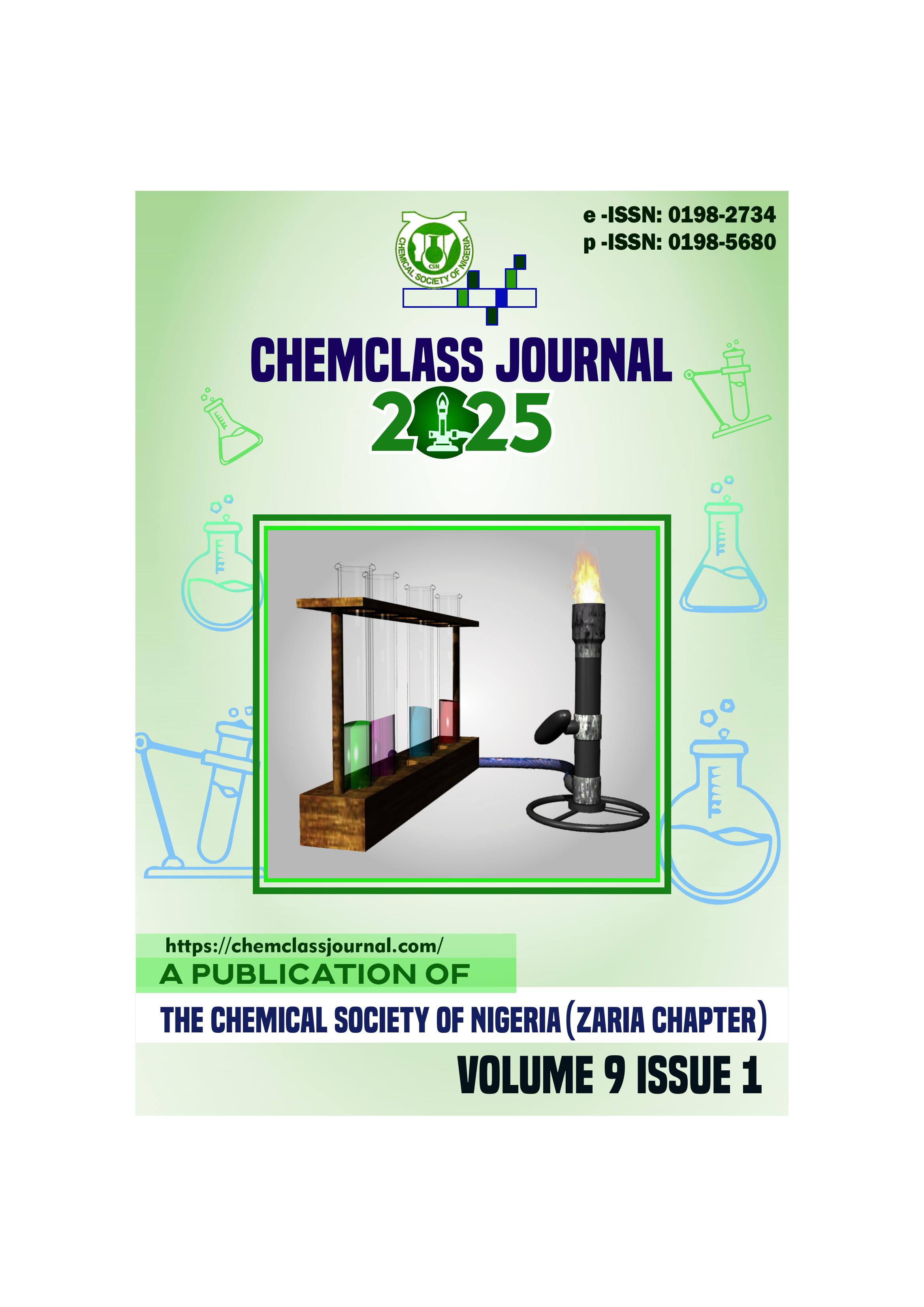Evaluation of Organochlorine Pesticides in Water, Soil and Plants Samples from Irrigated Farms at Hweng, Barkin Ladi LGA, Plateau State, Nigeria
DOI:
https://doi.org/10.33003/Keywords:
Gas chromatographic mass spectrophotometer, Hweng, Organochlorine pesticides, plant, soil, waterAbstract
The research work focused on the evaluation of organochlorine pesticides (OCP) in water, soil and plant
samples (tomato, carrot and garden egg) from irrigated farms at Hweng, Foron District in Barkin-Ladi LGA,
Plateau State, Nigeria. The water samples were collected from the Yakubu Gowon Dam (as control) and
the irrigated farms; while soil and plant samples were collected from the farms. Gas Chromatographic Mass Spectrophotometer (GC MS) was used to determine the concentrations of OCP. The OCPs were δ-Lindane, α-Lindane, γ-Lindane, Heptachlor, Aldrin, Heptachlor-Epoxide, Endosulfan 1, pp-DDE, Endrin, Endosulfan II, pp-DDD, pp-DDT, Methoxychlor. OCPs ranged from 0.08 to 113.00 mg dm-3 in water samples from the wastewater exit point, 0.03 to 59.47 mg dm-3 in water samples from the irrigated farms, 0.14 to 97.41 mg kg-1 in soil samples and 0.06 to 50.2 mg kg-1in the plant samples. All the results in water were higher than their respective controls, except heptachlor- epoxide (0.08 mg dm-3) and DDT (0.10 mg
dm-3). Also, all the results in the plant samples were higher than the WHO recommended values (0.495 mg kg-1). Aldrin content was predominantly the highest in all the samples, water (113.00 mg dm-3), soil (96.41 mg kg-1), and plant samples (50.2 mg kg-1A). A correlation coefficient was done and the levels of OCP in all the water, soil and plant samples had strong relationship and significant difference. Therefore, the elevated
level of organochlorine pesticides in this study indicates that awareness on the implications of the use of
agrochemicals beyond the recommended dosage by farmers should be intensified.





 ChemClass Journal
ChemClass Journal
